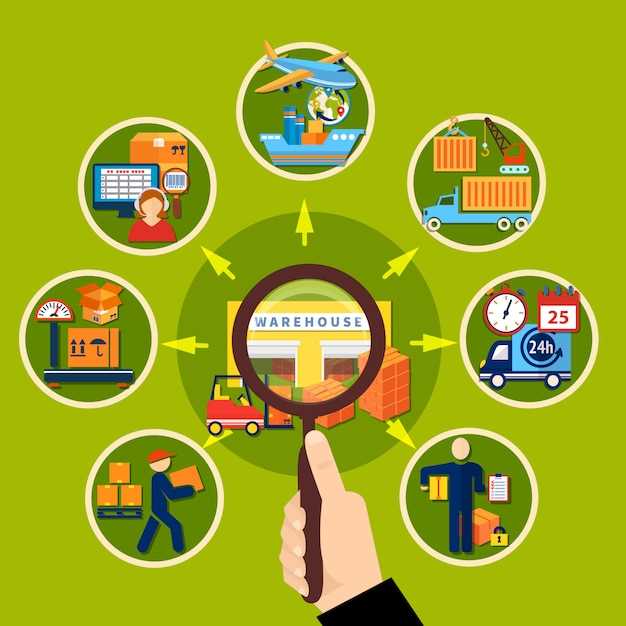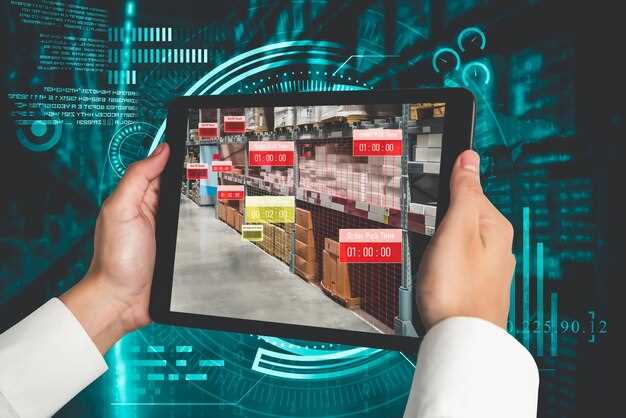Recommendation: Start by standardizing data across suppliers, plants, and logistics partners and equip frontline teams with live dashboards. This entire setup–unified data, cloud analytics, and edge-enabled sensors–will shorten decision cycles, keep stock levels aligned, and improve service across the network while you monitor performance in real time.
Trend 1: Real-time visibility becomes a must as sensors feed every node of the network, enabling a transition from reactive to proactive decision-making. Early pilots report 15–25% fewer stockouts and 10–20% faster responses during disruption events.
Trend 2: Resilience and risk management embed planning. Aside from cost-control goals, concerns about supplier concentration prompt scenario-based buffers and diversified sourcing, helping you absorb shocks without crippling operations. The difficult part is prioritizing where buffers matter most.
Trend 3: Automation and AI lift operations by handling routine tasks, increasing order-promising accuracy, and freeing ones on the floor to handle exceptions. In inbound logistics, accuracy gains a quarter or more and data-entry effort drops by about 60%.
Trend 4: Advanced analytics and demand sensing fuse internal data with external signals to improve reach and forecast quality. Built-in guardrails ensure you avoid overfitting and maintain good governance over models and decisions.
Trend 5: Sustainability and responsible logistics drive cost savings and risk reduction. Improved route optimization cuts fuel use and idle time, while sensors verify conditions for sensitive goods and help meet new regulatory requirements.
Resilient Supplier Networks: Multi-sourcing strategies; supplier risk scoring
Adopt a multi-sourcing framework for critical components: secure 2–3 interchangeable suppliers per item and implement a supplier risk scoring process with quarterly reviews. This approach directly reduces lack of supply during disruptions and improves deal terms on upcoming orders.
Frame a practical risk scoring model for the core network with five criteria: financial health, capacity, delivery reliability, qualityそして compliance. Assign weights, set a clear threshold, and trigger supplier development when scores dip below the line. A robust score helps you choose the right suppliers and reduce exposure across the supply chain.
Organizational alignment matters. Create a governance cadence about performance metrics that includes procurement, operations, risk, and finance ownership; integrate ERP and supplier portals; and publish monthly dashboards showing risk scores, spend concentration, and time-to-activate alternates. This structure lets the organization respond quickly and manage performance across the entire network.
Negotiate customized terms that balance cost and resilience: flexible SLAs, price collars, and capacity buffers; verify environmentally standards and require ESG data as part of supplier scorecards. Identify niche suppliers, each of which provides specialized capabilities and is prevalent in the market to fill gaps when risk spikes. Build an additional deal stream for upcoming contracts so you can secure capacity without interrupting existing supply.
Market intelligence and continuous improvement: maintain ongoing research about suppliers, monitor upcoming regulatory changes and supplier financials; maintain an entire risk register; use scenario planning to model supply shocks; and capture opportunities to re-balance spend toward diverse sources. This approach strengthens supply resilience and creates value across the industry supply chain.
Digitalization for End-to-End Visibility: Digital twins; real-time dashboards; predictive analytics
Start by deploying a digital twin for a particular product family to gain end-to-end visibility within 90 days. Connect live data from ERP, WMS, TMS, and supplier portals; the twin models inventory, production, and transport flows and updates with events such as demand spikes, supplier delays, and quality faults to stay well-suited for real-world use. This approach makes teams less behind in decision making and builds transparency that customers can trust. We believe this approach delivers benefits across organizational and organisation levels; test cases like adblue inventory validate forecasting accuracy and demonstrate real value. Teams found that coupling the twin with live dashboards reduces blind spots and speeds the turn from insight to action. Mindfully, keep the focus on value creation and measurable improvements across the chain.
Real-time dashboards surface metrics across organisational and organisation boundaries, integrating data from suppliers, manufacturing, logistics, and customers. They highlight forecast accuracy, on-time delivery, inventory coverage, and delivery reliability, helping management see where to act. The dashboards also support understanding of the links between planning, execution, and customer service, enabling actions that reduce waste and improve profits. These uses enable mutually transparent relationships with customers and suppliers, reinforcing trust and collaboration.
Predictive analytics turn historical patterns into forward-looking insight. Models assess demand volatility, lead-time variability, and disruption probability, then simulate events to compare response options. The outputs turn into concrete actions, guiding inventory buffers, supplier agreements, and transportation choices. This collaboration between human teams and machines boosts transparency and trust, making it easier to act on the next disturbance with confidence and minimize societal impact.
Implementation steps
- Define scope and governance with management; assign data owners; set cross-functional rules to ensure mutual accountability. Ensure data quality and alignment with organisational and organisation goals.
- Build the digital twin by connecting top data streams (ERP, WMS, TMS, supplier portals) and calibrating against a handful of events; ensure the model remains scalable and well-suited for changes in demand.
- Deploy real-time dashboards that surface critical KPIs across the entire chain; train teams and ensure users have access to clear, actionable insights. Include uses that span planning, execution, and customer service.
- Run predictive analytics, validate forecasts, and implement what-if scenarios for disturbance scenarios; establish playbooks that convert insights into concrete actions. Ensure the mind of planners stays focused on value and next-best steps.
- Institutionalize the new capability: embed into planning and execution processes; foster organisational learning, and align with customers and partners to sustain benefits.
Benefits and metrics
- Reduce cycle times and inventory carrying costs by 15-25% through better planning and faster reaction to events; profits rise as service levels improve.
- Increase forecast accuracy by 10-20% and on-time delivery by 5-15% with end-to-end visibility and data quality improvements.
- Improve transparency with customers and suppliers, strengthening trust and collaboration; disturbances affect society less as stakeholders share timely information.
- Enhance understanding between nodes in the network; use lessons from particular disturbances to refine models and actions.
- Demonstrate the value of digitalization to management and organisational leadership, encouraging further investment in technologies and talent. Have data-backed evidence to justify next-budget decisions.
Nearshoring and Regional Hubs: Local sourcing; regional manufacturing; trade zone benefits; strengthening supplier ecosystems
Adopt a regional hub model by pairing local sourcing with modular manufacturing, connected through a shared プラットフォーム that tracks intelligence on suppliers, capacity, and performance across markets. This プラットフォーム will enable faster responses to inflation and rising prices, beyond which you gain flexibility and resilience, while keeping green energy options in scope.
Implement a three-layer approach: near-market sourcing, regional manufacturing clusters, and streamlined trade zone processes. The approach supports existing supplier networks, adds enablers like local logistics nodes, and strengthens two-way interactions with suppliers. By clustering procurement near key markets, you achieve less exposure to disruption, cut electric power use, and reduce lead times; in some sectors, projected improvements range from 20% to 40% in delivery speed and prices stability.
Strengthen supplier ecosystems by aligning with green energy suppliers, regional distribution nodes, and a clear governance model. The system should support development of smaller regional firms, increase the share of manufacturing capacity within zones, and reduce dependence on distant suppliers. It must address care and risk management in case of shocks; the plan should include supplier interactions with customers and within the cluster network. Potentially, this gives your firm a broader base of reliable partners and improves resilience.
Implementation steps: map existing suppliers; identify gaps; set up regional hubs with lean operations; invest in a shared プラットフォーム for procurement, quality data, and supplier development; negotiate tariff-friendly rules within a trade zone; align with local utilities to secure electric power at stable prices; create a development program to meet sustainability and quality standards. The approach helps manage inflation risk and improves performance by reducing waste and accelerating time-to-market; projected savings will vary by sector but typically include lower landed costs and improved service levels; the required capabilities include data governance and cross-border logistics.
Measurement and governance: track relevant KPIs such as on-time delivery, defect rate, and supplier responsiveness; use the system to simulate scenarios and plan for disruption. Close interactions with partners to ensure care in compliance and risk management; focus on development of local capacity to handle demand peaks and unexpected shocks.
Policy Agility and Geopolitical Intelligence: Scenario planning; policy monitoring
Assign patrick as the owner of the policy monitoring playbook and assemble a cross-functional squad to deliver timely alerts on regulatory shifts, sanctions, and trade controls. Build a sense of urgency by mapping policy signals to the strategy and linking each signal to goals across procurement, production, and distribution, building a single source of truth that feeds the executive dashboard and ties every signal to a concrete goal for governance elements.
Connect several systems–ERP, WMS, TMS, supplier portals, and cloud data feeds–so signals flow to planners, buyers, and customers without delay. Use devices such as sensors and RFID tags to validate policy-driven assumptions and equip teams with real-time data. This advanced setup enables timely heat maps for risk and could accelerate the transition from data to action; utilise cloud analytics to strengthen resilience.
Scenario Planning Framework

Develop a four-scenario family: baseline, disruption-heavy, gradual normalization, and policy-tightening risk. Define triggers that include tariff changes, export controls, sanctions, port closures, currency volatility, weather shocks, and covid-19 policy shifts. Quantify effects on lead times, capacity, and cost, then link each scenario to concrete actions like diversifying suppliers, shifting volumes, and building capacity in nearby sites. Ensure plans address waste reduction and preserve service levels for customers while safeguarding commodity flows and maintaining strategic stock buffers.
Policy Monitoring Metrics

Establish a policy cockpit with metrics such as alert timeliness (target: 24 hours from trigger), coverage by geography and commodity, and vulnerability scores for critical suppliers. Use heat maps to visualize weather, political risk, and port bottlenecks; tie feed quality to cloud-based dashboards and enable rapid cloud-to-ground actions. Create a cadence: weekly risk brief, monthly deep dive, quarterly strategy alignment with goals and transition plans. Include a lightweight governance model that assigns two owners per area and records decisions against a public goals list to reduce waste and improve service reliability.
Sustainability and Circularity in Logistics: ESG metrics; carbon accounting; circular supply chains
Address the full emissions of your chain by mapping Scope 1-3, setting a target to reduce Scope 3 emissions by 30% by 2030, and deploying carbon accounting aligned with the GHG Protocol. Create an ESG data-sharing framework with suppliers and a dashboard that tracks progress across key metrics to guide decisions and address accountability among teams and partners. This framework helps you share progress with stakeholders and the broader organization.
Standardize ESG metrics across the organization and among suppliers by choosing a compact set of KPIs: GHG intensity per unit of product, energy use per tonne-kilometer, water risk exposure, and waste diversion rate. Maintain high data quality, ensure traceability, and publish results in a shared format that retail partners can access to compare performance. If youre part of a retail ecosystem, you want to see progress.
Circularity in packaging and product design matters: deploy design-for-disassembly, modular components, and take-back programs. Target at least 50% of packaging material to be reusable or recyclable within five years, and measure Material Reuse Rate (MRR) and end-of-life recovery. Think of packaging fibers like wool that can be spun into new forms, creating value that replaces waste.
Carbon accounting for logistics requires a clear view of transport emissions by mode and route. Use a carbon budget per lane, optimize routing, consolidate loads, and shift to lower-emission modes where feasible. Develop a life-cycle assessment (LCA) for top SKUs to understand supplier emissions and inform sourcing decisions.
Processing and data architecture enable real-time insights: collect data at the source, build a unified data lake, and ensure data quality for accuracy. Use processing pipelines and analytics to identify hotspots, forecast emissions, and adjust network design on the fly so decisions remain grounded in data.
Resilience and incentives: circularity reduces risk and creates business value; a well-suited program strengthens relationships with suppliers, improves cycle times, and reduces waste costs. Use a supplier scorecard that rewards transparency, on-time data sharing, and continuous improvement, helping organizations stay competitive with longer horizons and valuable partnerships.
Practical steps to start: map packaging waste streams, pilot reverse logistics with two product families, quantify cost-to-serve changes, and report progress monthly. Align procurement decisions with ESG goals to address client and retailer expectations, and scale successful pilots across the chain.
Invaluable advantages accrue when sustainability and circularity become a standard, not an add-on. By integrating ESG metrics, carbon accounting, and circularity into everyday planning, businesses strengthen quality, share of demand, and brand trust while reducing risk across the long chain of suppliers and partners.

 Top 10 Trends Shaping the Future of Supply Chain Management">
Top 10 Trends Shaping the Future of Supply Chain Management">
